November in Korea is a picturesque time when autumn’s vibrant colors linger, and the cooler temperatures set the stage for the transition into winter. Travelers can still catch the fading brilliance of fall foliage early in the month, while the latter weeks bring crisp, dry air and occasional glimpses of snow.
From the bustling streets of Seoul to the serene landscapes of Jeju Island, the weather ranges from mild to cool, creating ideal conditions for sightseeing and outdoor adventures without the crowds or high costs of early fall. With fewer tourists, it's perfect for exploring Naejangsan National Park’s trails, the artistic streets of Jaman Mural Village, and Jogyesa Temple’s historic grounds.
Visitors can also experience unique festivals, such as the Busan Fireworks Festival and the Jeju Olle Walking Festival. To make the most of the season, pack a variety of layers, comfortable shoes, and warm accessories, and prepare to enjoy delicious seasonal Korean foods like hodugwaja and gamjatang.

Jump to:
- 🍂 Weather in Korea in November
- 👨👩👧 Crowds and Costs in Korea in November
- 👗 What to Wear in Korea in November
- 📷 Places to Visit in Korea in November
- 🥳 Korea Festivals in November
- 😋 Korean Foods to Try in November
- 📝 Korea Itinerary for November
- 🎟️ Korea Exclusive Tours for Autumn
- ❓ Frequently Asked Questions
- 💬 Comments
🍂 Weather in Korea in November
November in South Korea serves as a delightful transition period between fall's vibrant hues and the crisp approach of winter. Early in the month, travelers can catch the fading fall foliage, a spectacle of reds, oranges, and yellows as the last of the trees shed their leaves.
As the month progresses, the days grow shorter and the air turns cooler, with average temperatures hovering around 41°F (5°C). While snow is an occasional visitor towards the month's close, the season maintains its charm with dry, pleasantly cool weather and low humidity, making it an ideal time for exploration.
The country's diverse geography ensures varied weather experiences. In Seoul, the northern capital, visitors can expect temperatures from a brisk 44°F (7°C) to a mild 66°F (19°C). The southern coastal regions, such as Jeju Island, offer slightly warmer climates, with temperatures ranging from 59°F-70°F (15-21°C).
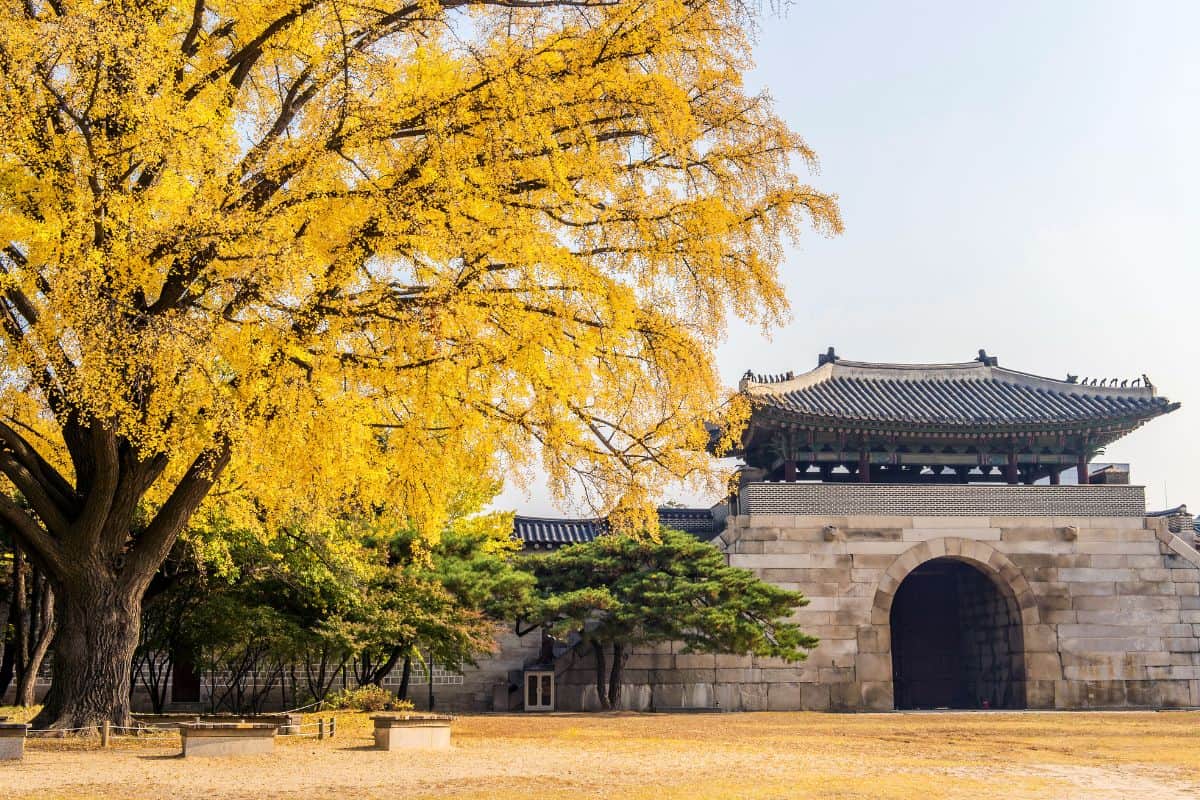
👨👩👧 Crowds and Costs in Korea in November
November slows down the vibrant autumn in South Korea, with fewer visitors as winter nears. This low season means fewer crowds and lower prices, perfect for a calm exploration of Korea's beauty. Early November still sees some tourists enjoying mild weather and fall colors, but it gets both quieter and colder later into the month, offering more affordable travel.
November is perfect for those wanting to enjoy South Korea's autumn without the rush. Most leaf peepers leave by late October, creating a peaceful setting. To make the most of it, visit popular parks and leaf spots early in the day for more space and stunning views of the last autumn colors.
👗 What to Wear in Korea in November
- Long sleeved t-shirts, sweaters, hoodies, cardigans: With average temperatures ranging from 41-66°F (5-19°C), it's best to pack a mix of lightweight and slightly thicker tops for layering.
- Jeans and long pants: Comfortable bottoms are a must for exploring the country's diverse landscapes. Opt for cotton or denim materials that allow for breathability and warmth.
- Light jacket or coat: As the temperatures can drop in the evening, I advise having a light jacket or coat on hand to keep warm.
- Scarf, gloves, and hat: For those seeking outdoor activities like hiking or strolling around local markets, packing accessories such as scarves, gloves, and hats will provide extra warmth and protection against the chilly winds.
- Comfortable walking shoes: With plenty of beautiful outdoor areas to explore, comfortable and sturdy shoes are necessary. Opt for sneakers or hiking boots to keep your feet happy during long walks.
- Skirts or dresses with tights: Pairing skirts or dresses with tights is a great option for those looking to add some style to their wardrobe. This allows for versatility in dressing up or down depending on planned activities.
- Raincoat or umbrella: While November is generally a dry month in South Korea, it is always better to be prepared for unexpected rain showers. Packing a raincoat or small umbrella will ensure you can still enjoy outdoor activities without getting caught in the rain.
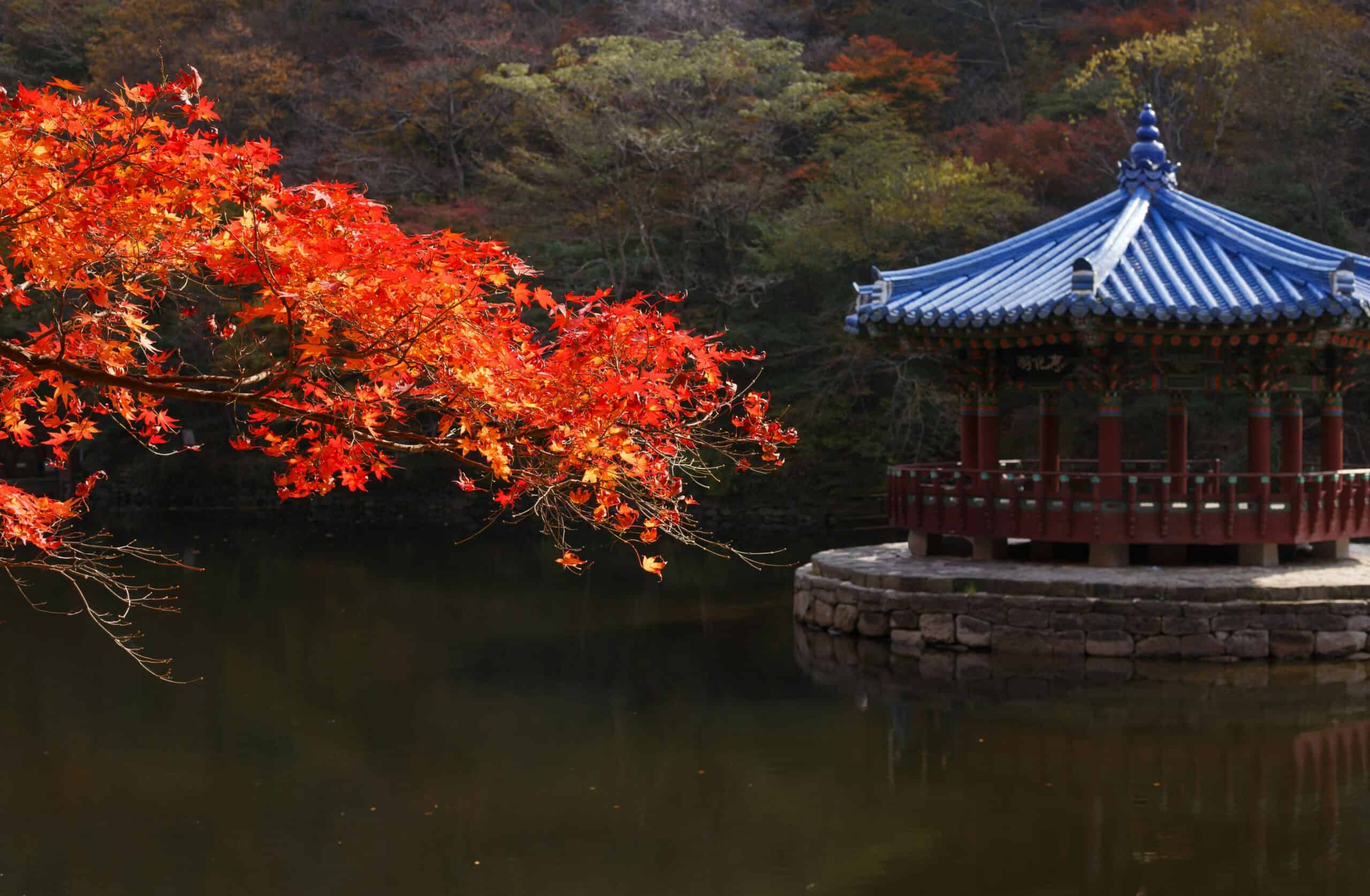
📷 Places to Visit in Korea in November
Naejangsan National Park
Naejangsan National Park in Jeollabuk-do is a top spot in Korea to see stunning autumn leaves, with vibrant reds and golds that draw nature lovers and photographers. Each season offers something special, from spring flowers to snowy winter cliffs.
Inside the park, you can visit beautiful waterfalls like Dodeokpokpo and Geumseonpokpo and explore historical sites like Baegyangsa and Naejangsa Temples. The park is home to around 760 plant species and lots of wildlife - easy-to-follow trails make it a great place for hiking and enjoying Korea’s natural beauty.
Mudeungsan National Park
Mudeungsan National Park is a must-visit mountain spot across Hwasun-gun, Damyang-gun, and Gwangju. At its heart is Mudeungsan Mountain, standing at 1,186 meters, known for its unique rock formations: Cheonwangbong, Jiwangbong, and Inwangbong peaks. The easy trails make it great for all hikers, offering stunning views.
Don't miss the cultural sites like Yaksasa, Jeungsimsa, and Wonhyosa temples at the mountain's base. The park changes with the seasons; enjoy the colorful autumn leaves at Gyubongam Hermitage or the winter snow.
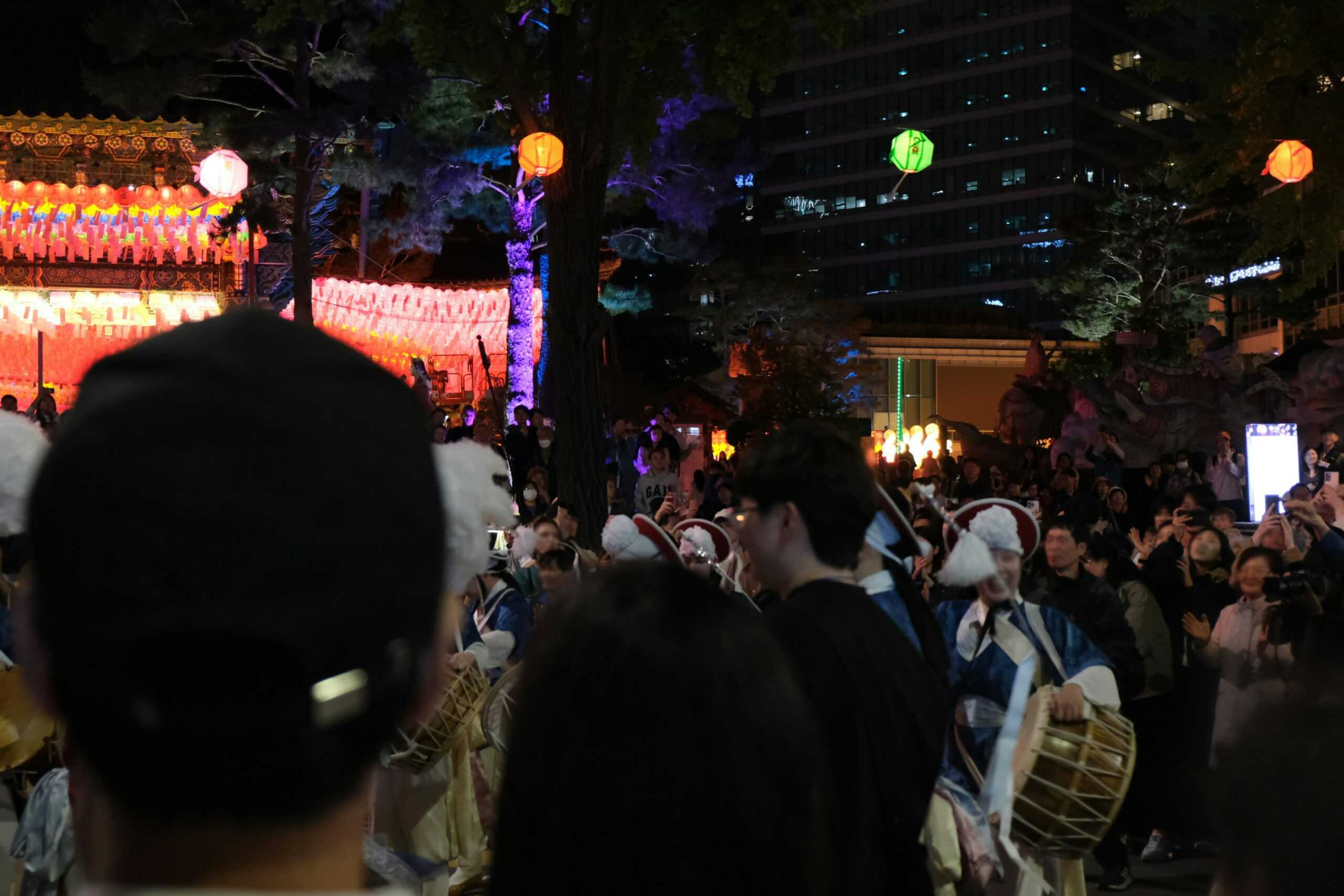
Jaman Mural Village
Jaman Mural Village, on the ridge between Omokdae and Imokdae by Seungamsan Mountain, is a vibrant spot for travelers. As you climb, you'll see colorful murals on buildings, each telling a fun story.
The village also offers a great view of Jeonju Hanok Village, showcasing traditional Korean architecture. Combining art and culture, Jaman Mural Village is a must-visit in Jeonju, mixing creativity with beautiful scenery.
Jogyesa Temple
Jogyesa Temple is a key site for Korean Buddhism in Seoul, serving as the main temple of the Jogye Order. Built in the late 14th century, it has faced many challenges, including a fire, though in 1910, monks rebuilt it and named it Gakwangsa.
By 1936, it became the head temple, known as Tegosa Temple. In 1954, efforts were made to restore traditional Buddhist practices, resulting in the current Jogyesa Temple. It now hosts various religious activities and events, including a famous lantern festival for Buddha's birthday.
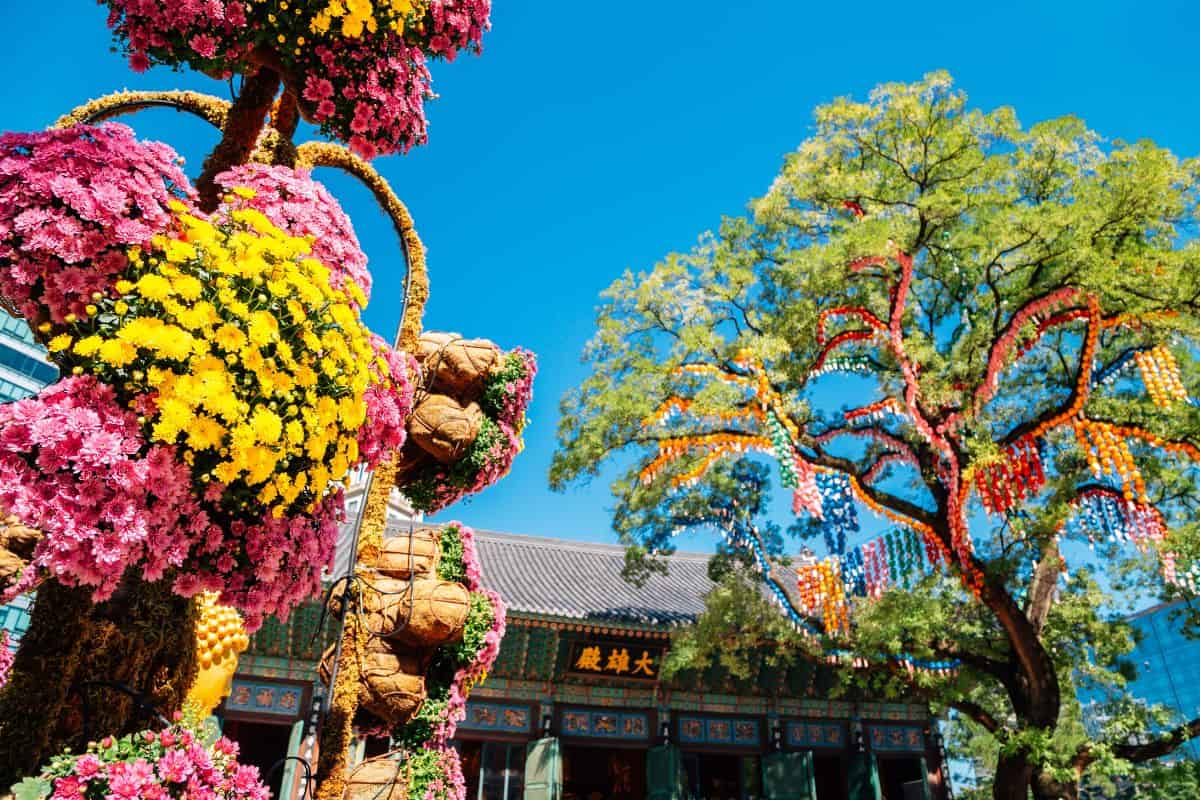
Wondaeri Birch Forest
Near Inje-eup, the Wondaeri Birch Forest offers a great eco-tourism experience. Between 1974 and 1995, 690,000 birch trees were planted across 138 hectares, and now, 25 hectares are dedicated to visitor experiences.
There are 2 trails: the Wonjeong Forest Trail, an 80-minute walk, and the Wondae Forest Trail, which takes about an hour. Walk among tall birch trees with white trunks absolutely create a magical canopy.
The forest turns into a beautiful snowy scene in winter, perfect for photos. It's a great place for families, too, with the Children’s Forest Experience Center offering fun and educational activities.
🥳 Korea Festivals in November
Busan Fireworks Festival
Every November, the Busan Fireworks Festival lights up the sky over Gwangalli Beach. Visitors worldwide enjoy the stunning fireworks, which reflect beautifully on the ocean. The show, timed to music, combines elegance and excitement, capturing Korean creativity.
Beyond the fireworks, the festival includes cultural programs where attendees can explore local traditions through performances and exhibits. Laser light shows and media displays add to the lively atmosphere, making the Busan Fireworks Festival a must-see event.
Jogyesa Chrysanthemum Festival
The Jogyesa Chrysanthemum Festival in Seoul is a must-visit for anyone interested in Korean Buddhism and flowers. Located at 55 Ujeongguk-ro, Jongno-gu, this temple hosts exciting events all year.
In November, the temple bursts with colorful chrysanthemum displays; visitors can stroll through the beautiful flower exhibits, take photos, and enjoy the peaceful surroundings. This festival is a visual treat, showcasing chrysanthemums in various designs, offering a relaxing break from city life.
It offers a unique chance to enjoy Korea's spiritual and floral beauty. Guests can explore the displays, learn about chrysanthemums in Korean culture, and soak in the calm of Jogyesa Temple, perfect for photography lovers and those looking for quiet moments in nature.
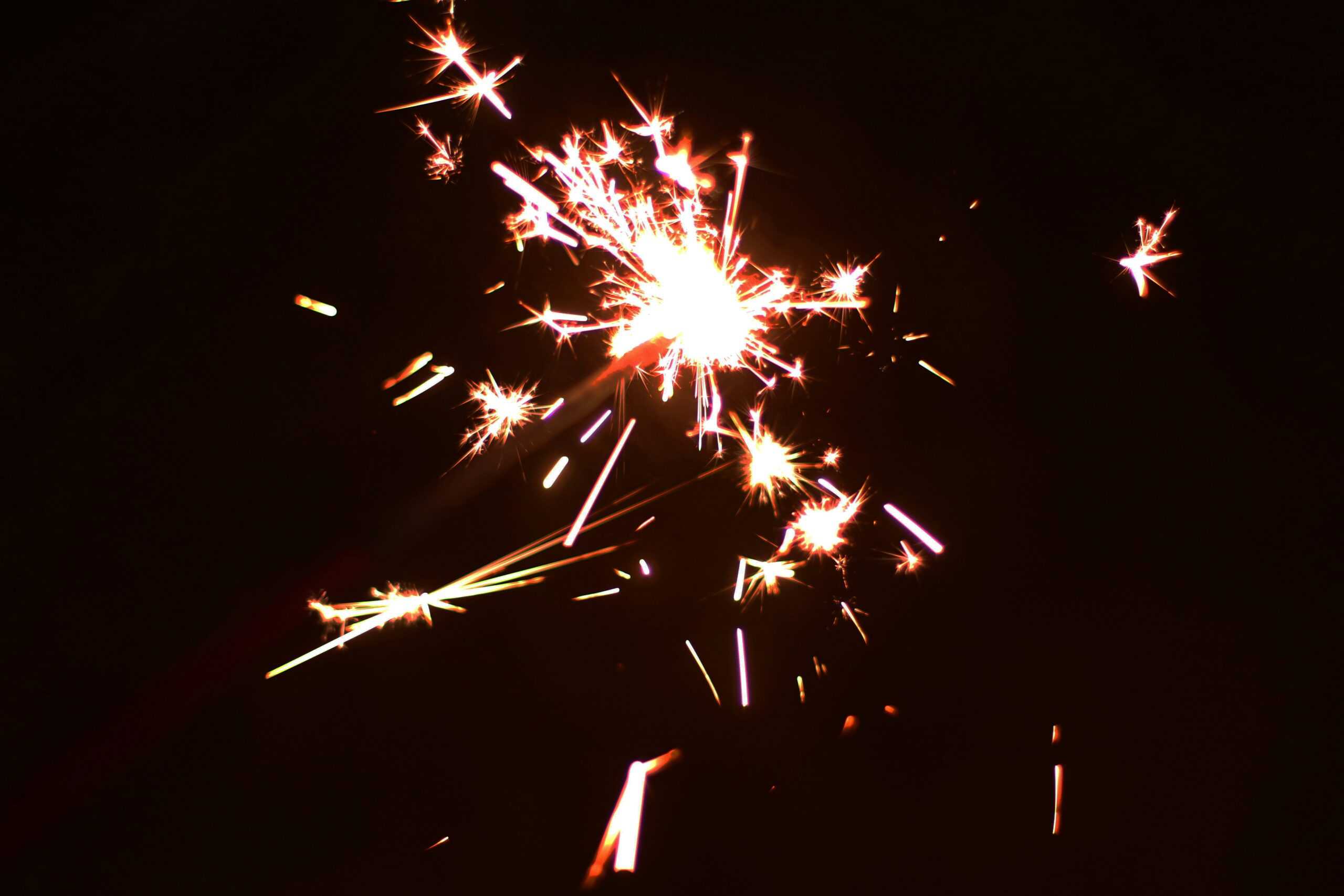
Cheongsong Apple Festival
Located in Wolmak-ri, Gyeongsangbuk Province, the Cheongsong Apple Festival is a must-visit event for travelers. Held every November, it offers fresh, juicy Cheongsong-grown apples at great prices. The festival celebrates apples with activities like apple parades, contests, and sculptures.
It's a fun, family-friendly event where you can enjoy and take home delicious apples, eith the festival mixing tasty treats with cultural fun, creating a memorable experience for everyone.
Jeju Olle Walking Festival
Located on Jeju Island, the Jeju Olle Walking Festival in November is a great way to explore the area's beauty. Starting at 22 Jungjeong-ro, Seogwipo-si, the event lets you walk 23 hiking trails, each offering unique views. People from all over the world come to enjoy the cool autumn weather and Korean culture.
As you walk, enjoy traditional shows and food that highlight local customs. This festival is perfect for adventure seekers and those wanting a taste of Korean culture in a slightly warmer clime.
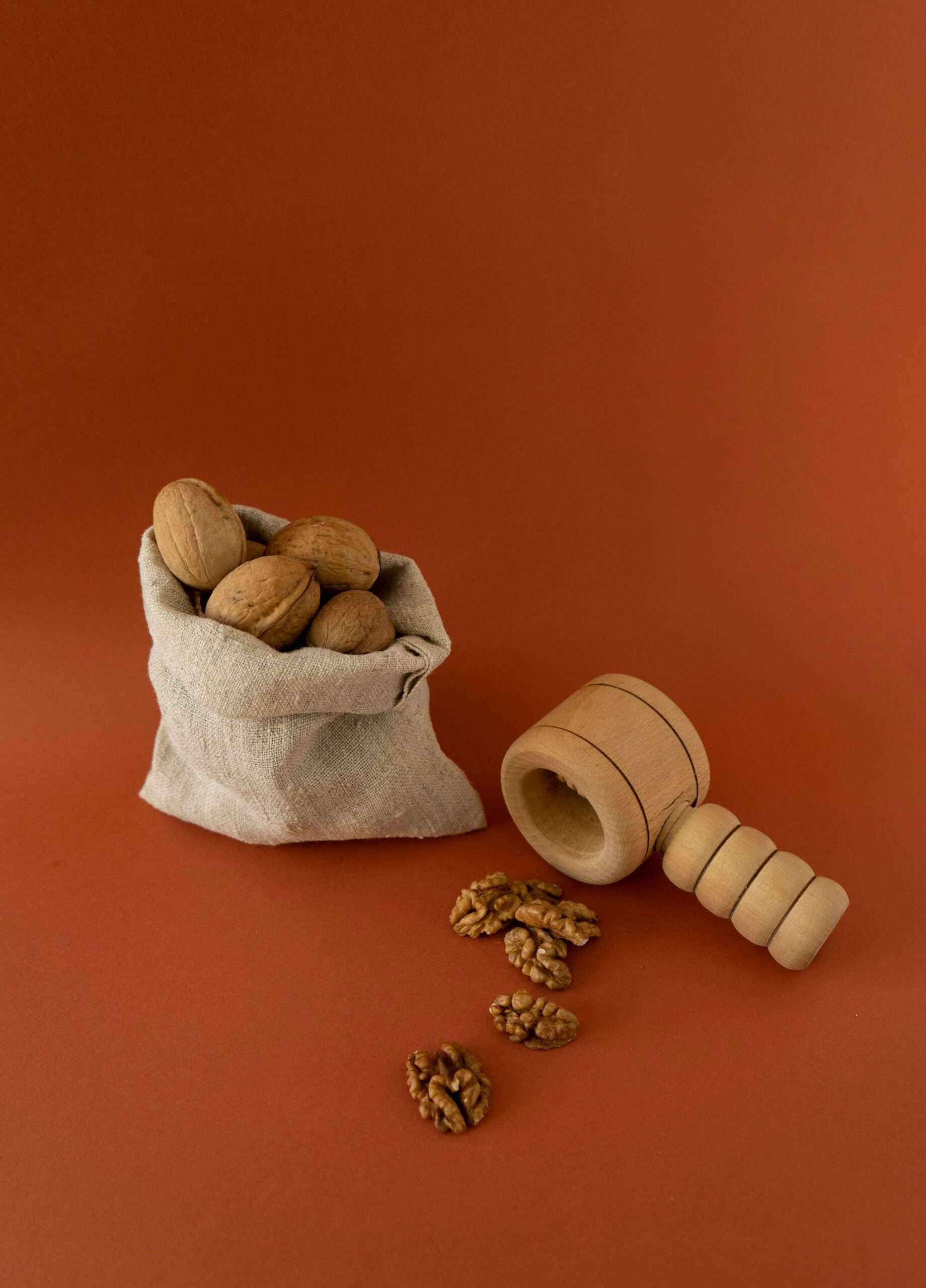
😋 Korean Foods to Try in November
Hodugwaja
Hodugwaja, known as Cheonan walnut cakes, are popular Korean snacks from Cheonan. These tasty treats are made from flour dough and filled with sweet red bean paste and walnut bits; their crispy outside and rich filling make them loved by all ages.
Found at rest stops across Korea, hodugwaja is a travel favorite. Besides the classic filling, you can try new flavors like custard for a fun twist- they're a must-try for Korean snack lovers!
Gamjatang
Gamjatang, also called pork bone soup, is a popular Korean comfort food. Despite its name, the main focus is on pork spine or ribs, not potatoes. This tasty soup mixes tender meat with vegetables like potatoes, mushrooms, onions, and perilla leaves.
Some versions even add kimchi for a tangy flavor. Travelers looking to enjoy authentic Korean food should try gamjatang, available in many restaurants throughout the country, each offering a unique version. Enjoying gamjatang gives a glimpse into Korea's rich food culture, making it a must-try for food lovers.

Ojingeo Bokkeum
Ojingeo bokkeum is a must-try for anyone exploring Korean food. This tasty dish features tender squid with crispy vegetables in a spicy gochujang sauce, which adds a sweet and spicy kick that complements the fresh ingredients.
Popular in Korean homes and restaurants, it shows the nation's love for both squid and spicy flavors. Trying ojingeo bokkeum offers a delicious taste of Korea's food culture. It's available in many restaurants, each with its own twist.
Gyeranppang
Gyeranppang is a popular Korean street food among locals and travelers. It's a handheld treat with a soft cake base topped with a baked egg, offering a tasty balance of flavors. You can find different versions with toppings like green onions, cheese, bacon, and hotdog slices, making it a must-try in Korea's street food scene.
Goguma Mattang
Goguma mattang, also known as Korean sweet potato, is a staple in Korean cuisine, and goguma mattang is a popular way to enjoy it. This dish features bite-sized chunks of sweet potato coated in a sticky syrup made with honey or sugar, though some versions also add nuts for added texture and flavor.
It's a popular snack during the winter months, as sweet potatoes are believed to have warming properties, and can be found cooked over coals on every street corner at the first sign of cold weather. The mix of textures and flavors makes goguma mattang an addictive treat that's hard to resist (and baked sweet potatoes a close second!).
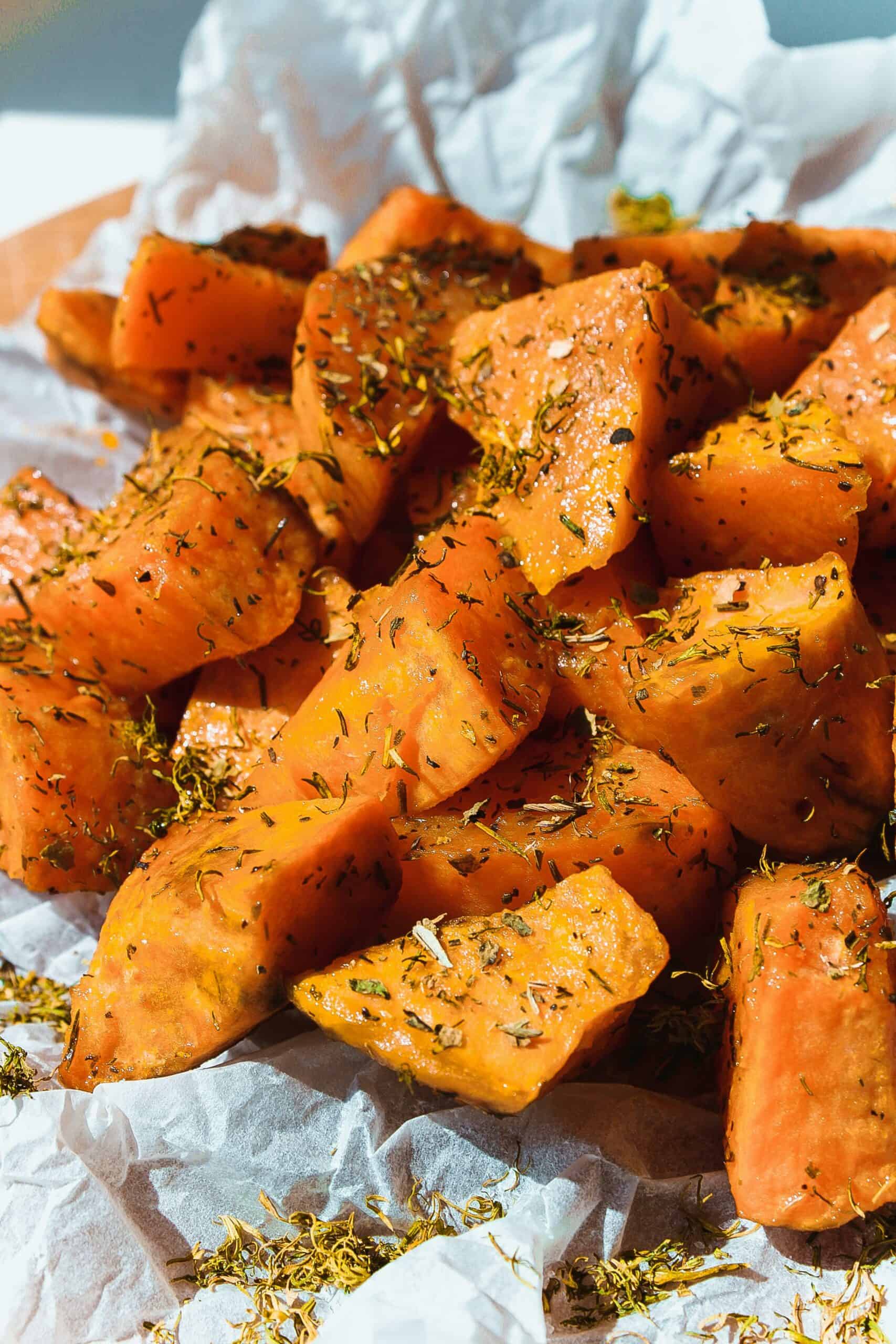
📝 Korea Itinerary for November
Day 1: Exploring Naejangsan National Park
Start your day early and head to Naejangsan National Park to capture the stunning morning light over vibrant red and gold autumn leaves. Begin your hike along the easy-to-follow trails and enjoy the scenic beauty of the park - don’t miss visiting Dodeokpokpo and Geumseonpokpo waterfalls along the way!
After a leisurely lunch break, explore the Baegyangsa Temple, nestled within the park. Spend some time taking in the peaceful atmosphere and learning about the temple’s history, then continue your hike to Naejangsa Temple, which is particularly beautiful when surrounded by the colorful fall foliage.
Head to a nearby town and enjoy a traditional Korean dinner featuring gamjatang (pork bone soup) at a local restaurant, ending your day by relaxing at your accommodation.
Day 2: Discovering Mudeungsan National Park
Begin your day with a hike up Mudeungsan Mountain in Mudeungsan National Park. Aim for the top of Cheonwangbong Peak, the highest of the three distinctive rock formations, to catch panoramic views of the surrounding area.
As you ascend, appreciate the unique rock formations like the Jiwangbong and Inwangbong peaks. Take a break at the Jeungsimsa Temple at the mountain’s base and explore its serene surroundings, then continue to the Gyubongam Hermitage to witness the brilliant colors of autumn leaves.
Take your time walking through the scenic trails, which are perfect for a peaceful afternoon stroll. Make your way to Gwangju for dinner and try the spicy ojingeo bokkeum (spicy squid stir-fry) at a local restaurant. The mix of squid, vegetables, and gochujang sauce will warm you up after a day of hiking.
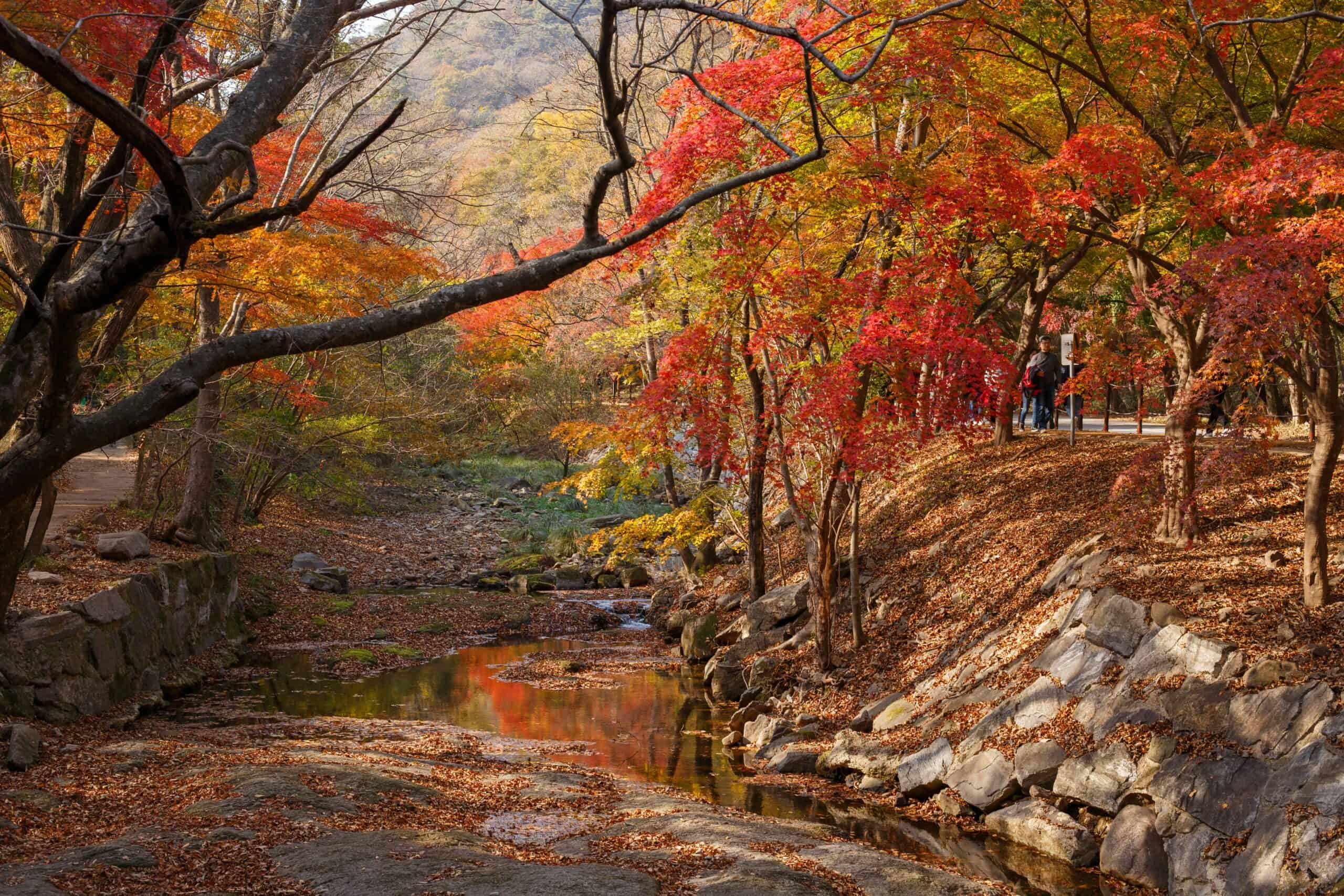
Day 3: Artistic Escape to Jaman Mural Village
Spend your morning at Jaman Mural Village in Jeonju, walking through the vibrant streets filled with colorful murals and immersing yourself in the stories and art depicted on the walls.
Take in the panoramic views of Jeonju Hanok Village from the hilltop and capture some stunning photos, then head down to Jeonju Hanok Village for lunch and explore the traditional Korean houses. Visit some of the art galleries and cultural centers, and enjoy trying on a hanbok (traditional Korean dress) for a unique cultural experience.
End the day by enjoying goguma mattang from one of the street food stalls in the village; the warm, sticky sweetness is the perfect treat for a chilly evening. Spend the night strolling through the village, enjoying the evening lights and the cozy atmosphere, weather permitting.
Day 4: Cultural Day in Seoul at Jogyesa Temple
First thing in the morning, head back to Seoul and then start your day by visiting Jogyesa Temple. Explore the beautiful grounds of this historic temple and learn about its significance in Korean Buddhism - if visiting during the Buddha’s birthday celebration, you'll enjoy the vibrant lantern festival that lights up the temple complex.
Visit the nearby Insadong neighborhood for a traditional Korean lunch and explore its artsy streets filled with antique shops, tea houses, and calligraphy stores. Spend your afternoon wandering through the area, enjoying cultural performances and shopping for souvenirs from Seoul.
End your day by savoring some hodugwaja with a hot cup of tea at a café in the area. Take a quiet evening stroll along Cheonggyecheon Stream, enjoying the tranquil sounds of water under the city lights.
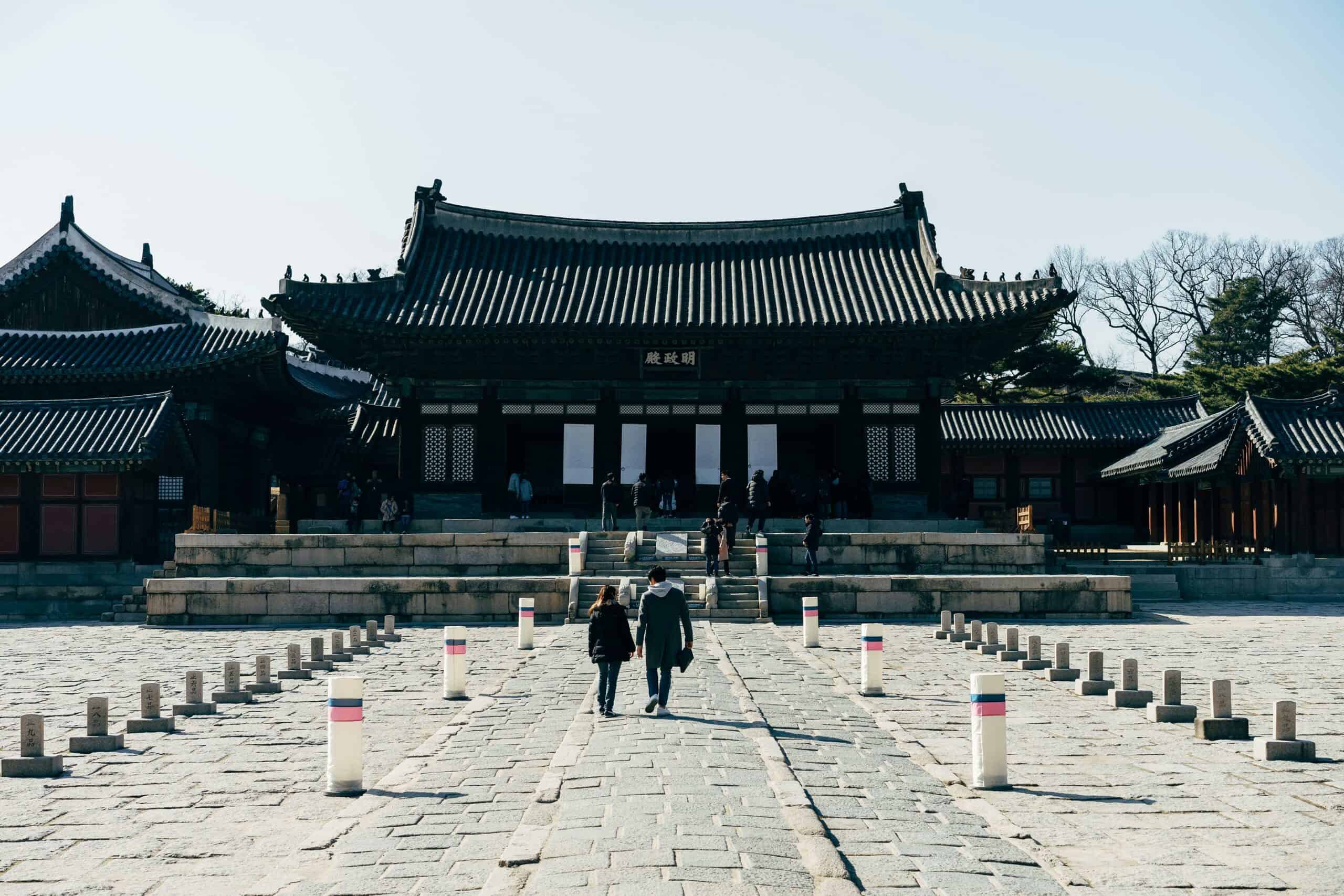
Day 5: Nature Retreat at Wondaeri Birch Forest
Begin your morning with a trip to Wondaeri Birch Forest in Inje-gun. Walk along the Wonjeong Forest Trail to experience the serene beauty of the tall white birch trees. The morning light filtering through the canopy creates a magical atmosphere, perfect for nature lovers and photography enthusiasts.
Take a break at the Children’s Forest Experience Center, where you can enjoy interactive activities or relax with a picnic. Opt for the Wondae Forest Trail if you want to explore more of the area’s beauty, as the fresh air and tranquil scenery make this an ideal afternoon getaway.
After returning from your nature retreat, enjoy a comforting dinner at a local restaurant in the nearby town. Try gyeranppang for dessert, a sweet and savory street food that’s perfect for ending your evening on a warm note.
🎟️ Korea Exclusive Tours for Autumn
Mt. Gamaksan + Eunpyeong Hanok Village + Haneul Park 1-Day Tour
The Mt. Gamaksan + Eunpyeong Hanok Village + Haneul Park 1-Day Tour runs every day in autumn and winter (except Thursdays) and on Wednesdays, Fridays, and Sundays in summer. Book at least 2 days ahead by 2:00 pm KST for a guaranteed spot.
This ten-hour tour takes you on an adventurous trip through Korean cultural hotspots - and some absolutely gorgeous ones, at that. You start at the pink muhuly and silver grass fields of Haneul Park,and then continue on to the Gamaksan Suspention Bridge, just a breathtaking 15 minute walk from your arrival point.
The tour finishes at Eunpyeong Hanok Village and Jingwansa Temple, both natural beauties in their own rights. Ideal for solo travelers or groups, it includes round-trip transport, an English or Chinese-speaking guide, and all entrance fees. Just show your e-ticket on your phone for a smooth start to an unforgettable day.
Pocheon Sanjeong Lake + Bidulginang Cascade + Herb Island 1-Day Tour
Join this exciting day tour to explore Pocheon Sanjeong Lake, Bidulginang Cascade, and Herb Island. You can also visit a local apple or strawberry farm for a fresh touch in the very start of winter, though this is an optional addition.
The tour lasts about 11 hours, an all day adventure and perfect for enjoying each spot. Like the first tour, you also have to book at least 2 days in advance and show your e-ticket on a mobile device when meeting the group.
Meet up at Hongik University Station, Myeongdong Station near Shingsegae Duty Free, or Dongdaemun History & Culture Park Station. The package includes round-trip transport, an English or Chinese-speaking guide, and entrance fees, ensuring a hassle-free experience in beautiful Korea.
❓ Frequently Asked Questions
Yes, November is a great time to visit Korea, as the weather is cool but still comfortable for doing outdoor activities. The autumn foliage also reaches its peak during this month, making it a beautiful time to explore nature.
The average high temperature in November in Korea ranges from 45°F (7°C) to a mild 66°F (19°C), so it can get chilly. I recommend you bring layers and a warm jacket for any outdoor activities.
Yes, Busan is definitely worth visiting in November. The weather is pleasant and there are a huge variety of events and festivals happening during this month, such as the Busan Fireworks Festival and the Busan International Film Festival.

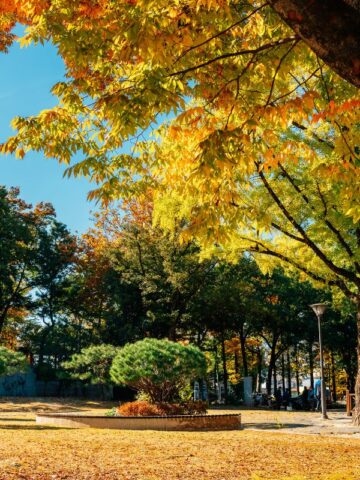
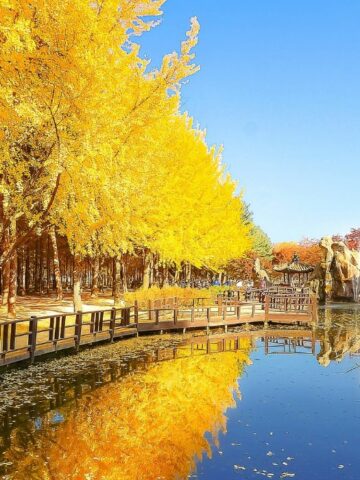
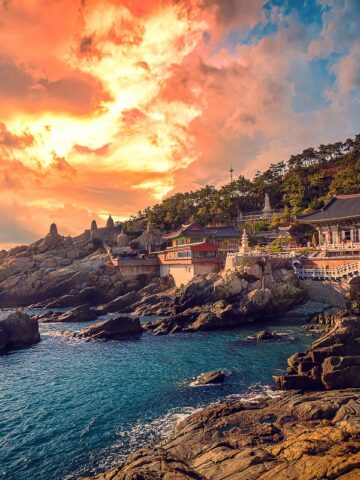
Comments
No Comments